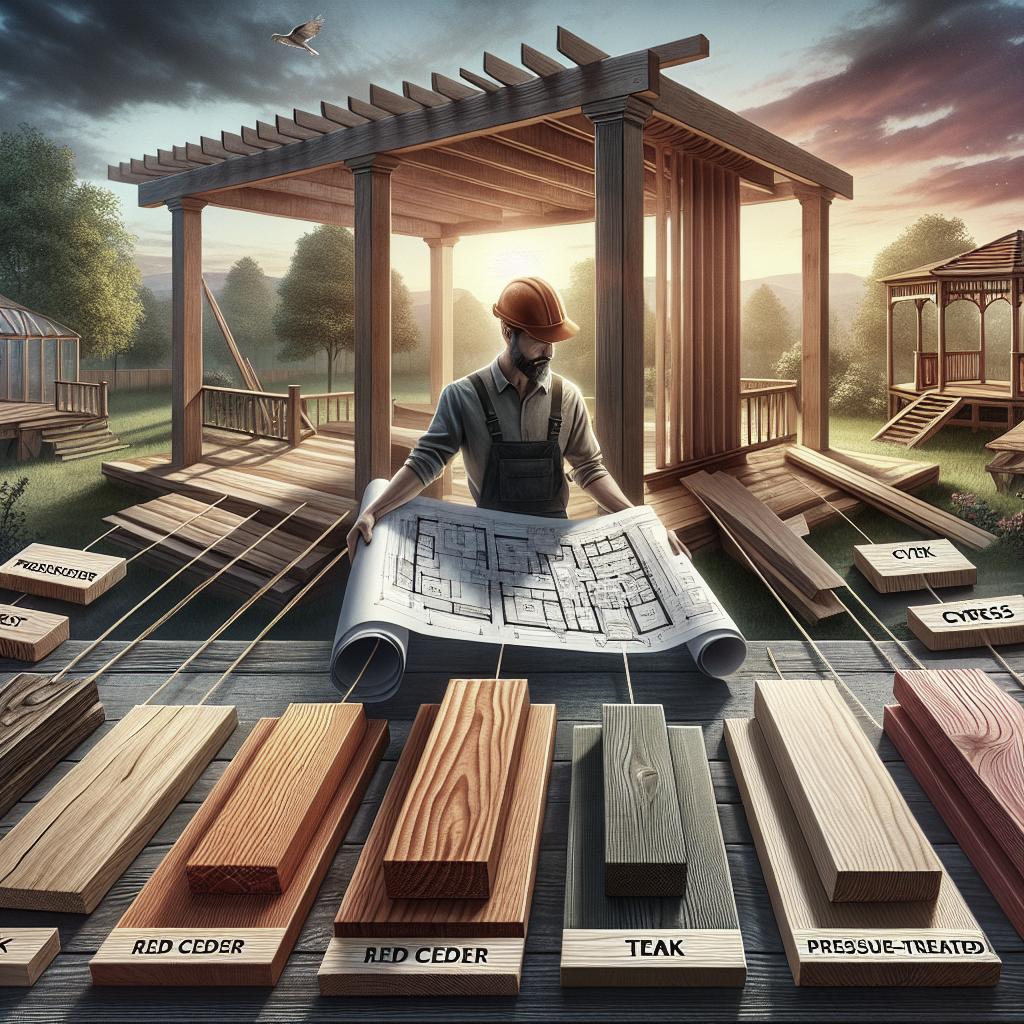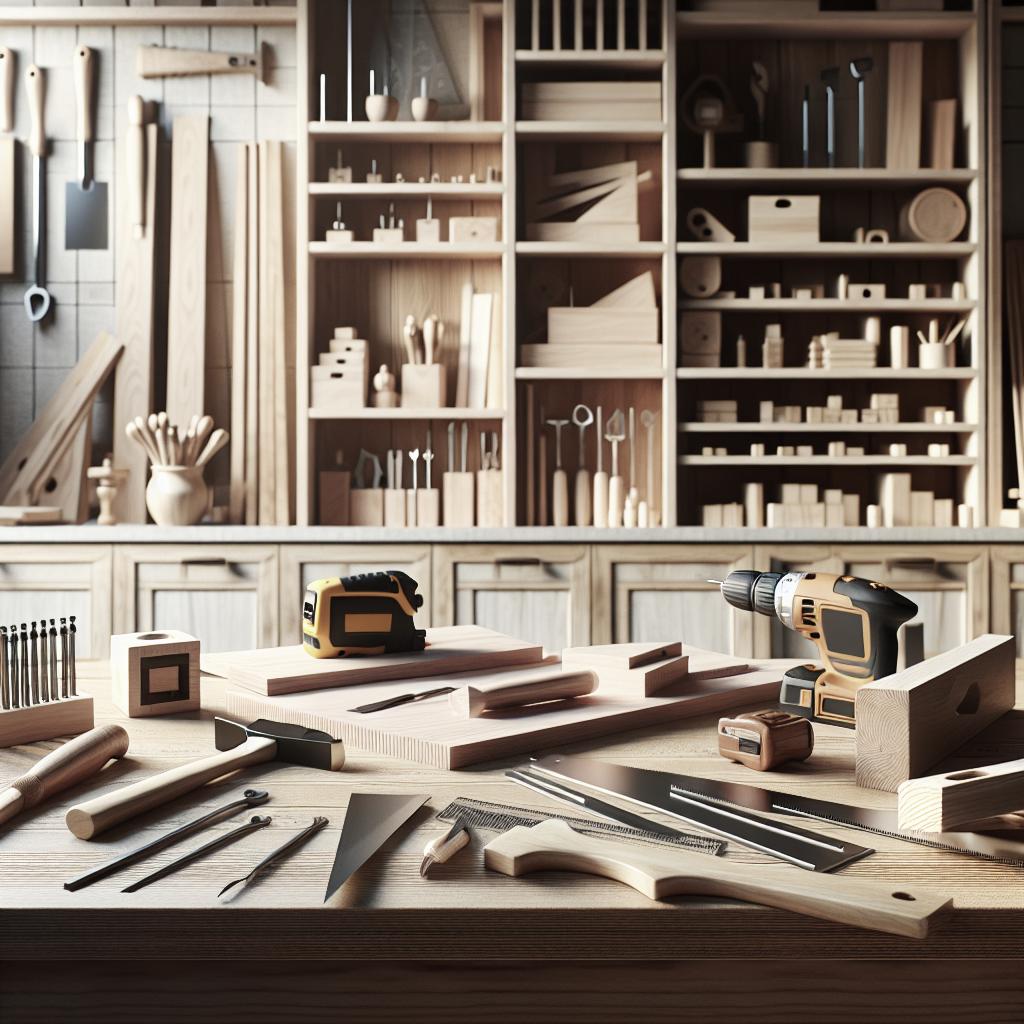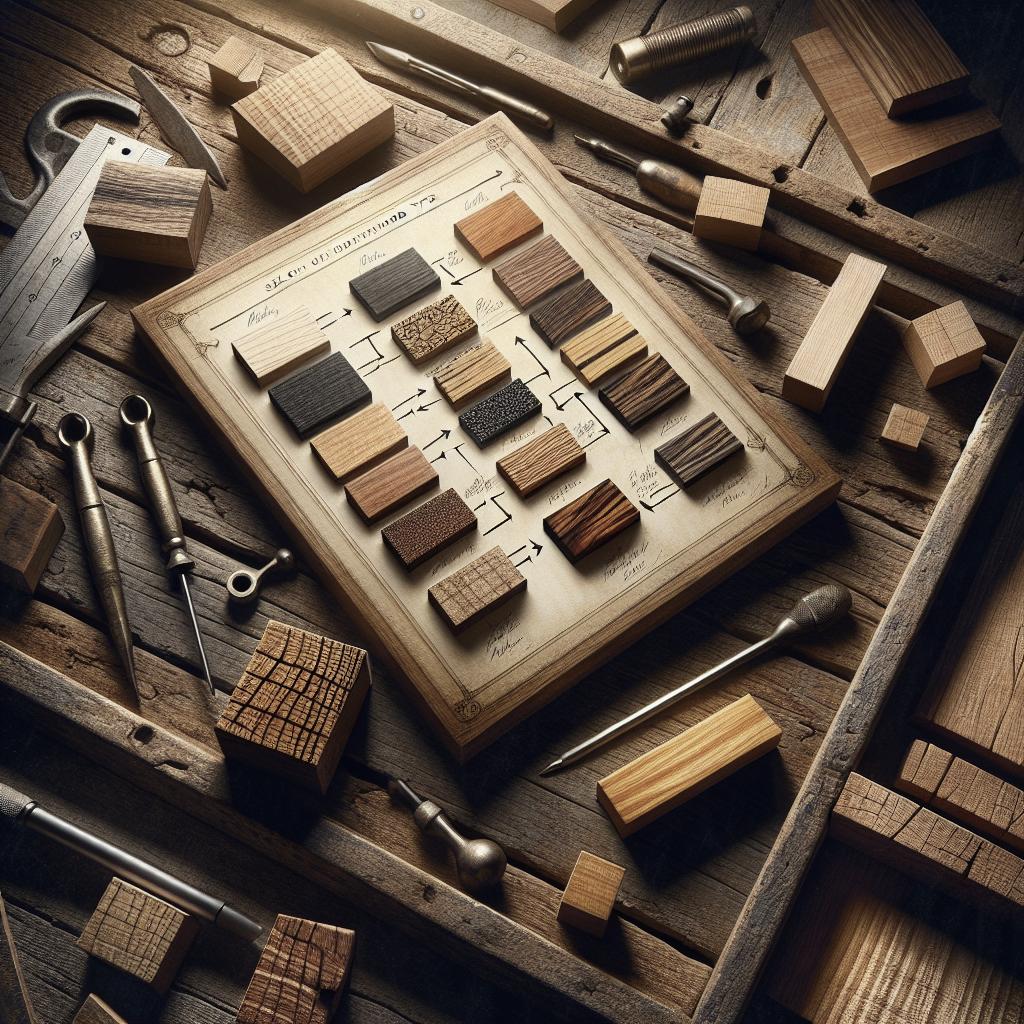“`html
How to Choose the Best Wood for Outdoor Structures
Building outdoor structures requires careful consideration of many factors, with the choice of wood being one of the most crucial. Whether you’re constructing a sturdy deck, an elegant pergola, or practical fencing, selecting the right wood can significantly impact longevity, aesthetics, and cost. This article offers a comprehensive guide on the best wood options for outdoor projects. You’ll learn about commonly used treated woods, explore the unique qualities of white oak, and discover top-of-the-line options. Additionally, we’ll delve into the benefits of rot-proof composites. By the end of this guide, you’ll have a nuanced understanding of how to choose the perfect wood to meet your outdoor project’s needs.
Choose Wisely
When it comes to outdoor construction, choosing the right wood is crucial to ensure durability and appeal. Not all woods are created equal, and some varieties inherently offer more characteristics suitable for resisting weather elements. It’s essential to consider factors like resistance to moisture, insect infestations, and the general climate of your location.
An inappropriate choice might lead to faster deterioration or higher maintenance costs. Researching the types of wood available in your area and understanding their strengths and weaknesses can save you time and money. Additionally, understanding the environmental impacts of your choice is becoming increasingly important. Consider sustainability certifications that indicate the wood is sourced responsibly.
Woods for Outdoor Projects
Several types of wood are widely regarded as suitable for outdoor projects. Cedar and redwood are often favorites due to their natural oils that resist moisture and pest invasions. Their rich color and grain also add a natural beauty to any project. However, their availability and price can vary, making them less feasible for some budgets.
Pine, although less hardy than cedar or redwood, can be an option if treated properly. Its affordability makes it a popular choice for those looking to balance cost and durability. Conversely, tropical hardwoods like teak and mahogany offer superior resistance to outdoor elements but come at a premium price. When considering these choices, weigh them against your budget constraints and desired aesthetic.
Treated Woods are Common Choices
Treated woods stand out as a pragmatic choice for outdoor structures. By undergoing a chemical process, these woods gain enhanced resistance to moisture, fungi, and pests, making them robust contenders for decks, outdoor furniture, and garden structures. After treatment, woods like pine can endure harsh outdoor conditions, bridging the gap between affordability and functionality.
While treated woods offer increased durability, it’s crucial to handle and dispose of them responsibly. Certain treatments might contain hazardous chemicals, necessitating thorough research or consultation with suppliers. If you’re building play equipment or picnic tables, opting for non-toxic treatments is recommended to ensure safety.
White Oak
White oak is a remarkable choice for those seeking a blend of aesthetics, strength, and weather resistance. Its closed grain structure equips it with a natural impermeability to water, preventing common issues like swelling and rotting. This makes white oak particularly well-suited for boat building and outdoor furniture.
Despite its resilient attributes, white oak doesn’t require extensive finishing, though a good sealant can help maintain its appearance over time. Its pale, appealing color and naturally smooth texture offer versatility for a range of designs. Builders and DIY enthusiasts often choose white oak when the design demands a balance between elegance and endurance.
Top of the Line
For those willing to invest in premium wood, tropical hardwoods like teak, ipe, and mahogany present an unmatched level of quality. Sourced primarily from South America and Southeast Asia, these woods possess inherent resistance to decay, insects, and the harsh effects of UV radiation without the need for chemical treatments.
Furthermore, these woods exhibit an exquisite appearance, with deep hues and intricate grain patterns that add luxury to outdoor projects. Their density and hardness ensure structures built with them last for generations. However, the premium cost and sourcing challenges require careful consideration to ensure eco-friendly procurement.
Rot Proof Composites
Composites are manufactured from a blend of wood fibers and plastics, offering a modern solution to the traditional concerns of wood construction. Often engineered to mimic the appearance of natural wood, composites are virtually maintenance-free and immune to rot, warping, and insects. They stand as eco-conscious alternatives for decking, railings, and furniture.
While the initial cost of composites might be higher than some untreated woods, their longevity and negligible maintenance costs provide value over time. Composites are also available in a wide variety of colors and finishes, allowing personalized aesthetics without the hefty recurrent maintenance.
Related Content
Exploring the various wood options for outdoor structures opens up a broader exploration of home improvement topics. Consider diving into articles on appropriate finishes to enhance wood longevity, sustainable sourcing of materials, or a step-by-step guide on building with composite materials. Each aspect can increase the quality and success of your outdoor projects.
If you’re interested in learning more about building sustainable outdoors spaces or understanding weather-resistant designs, don’t miss our other articles. For those just starting out, check out guides on basic woodworking techniques and tools required for DIY projects.
Final Thoughts
| Wood Type | Advantages | Considerations |
|---|---|---|
| Cedar and Redwood | Natural oils, aesthetic appeal | Cost and availability |
| Treated Pine | Affordable, durable after treatment | Chemical handling |
| White Oak | Weather resistant, aesthetic versatility | Initial untreated maintenance |
| Tropical Hardwoods (Teak, Ipe) | High durability, luxury appearance | High cost, sourcing |
| Composites | Maintenance-free, rot-proof | Higher initial cost, artificial appearance |
“`


